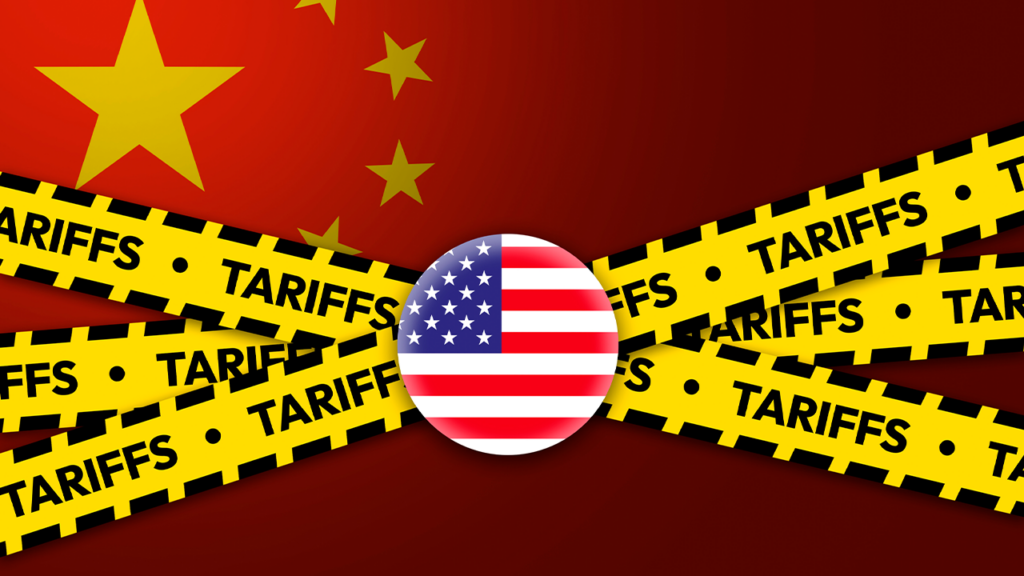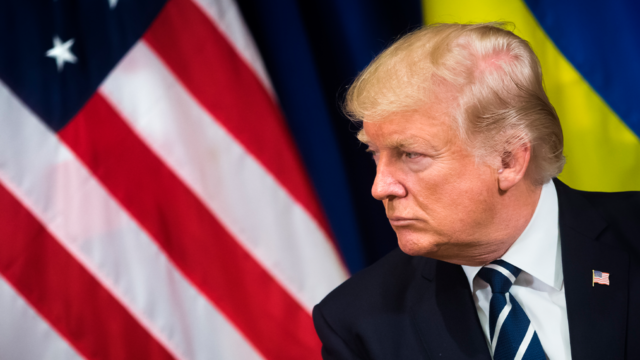ID 100589786 | Donald Trump © Palinchak | Dreamstime.com
Introduction
When countries feel that their trading rights are violated, they can bring complaints to the WTO, which can lead to negotiations or sanctions against offending countries. This mechanism helps maintain a level of order in global trade, despite the potential chaos caused by unilateral tariff actions.
Understanding Tariffs and Their Purpose in the Context of President Trump
For instance, if a country imposes a 20% tariff on imported steel, the price of that steel will increase. Consequently, manufacturers may choose to buy steel produced within their own country, supporting local jobs and industries. However, this can also lead to higher prices for consumers, as manufacturers pass on the cost of tariffs.
In light of President Trump’s tariffs, domestic manufacturers are feeling the pressure to adapt and compete effectively in the global market.
President Trump’s administration has implemented significant tariffs on various imports, aiming to protect American industries and jobs. President Trump has been vocal about his intentions to reshape trade dynamics with China, emphasizing the need for fair practices.
President Trump’s administration argues that these tariffs are necessary to level the playing field against countries that do not adhere to fair trade practices.
Critics of President Trump’s tariffs caution that a trade war could lead to higher prices and reduced consumer choices in the long run.
Tariffs are taxes imposed by a government on imported goods. They serve multiple purposes, including protecting domestic industries, generating revenue for the government, and influencing consumer behavior. By making imported goods more expensive, tariffs encourage consumers to buy domestically produced products. This can lead to increased job creation within the country, as local industries grow in response to reduced foreign competition.
Understanding the rationale behind tariffs requires a broader look at economic theory and practice. Economists often debate the effectiveness of tariffs in achieving long-term economic goals. While some argue they protect jobs and industries, others suggest that they can lead to trade wars, which can ultimately harm consumers and businesses alike.
President Trump’s bold stance has ignited discussions among economists regarding the long-term impact these tariffs might have on international relationships.
In a bold move to address the U.S. trade deficit and protect domestic industries, President Trump has signed an executive order imposing a 104% tariff on Chinese imports, effective immediately as of April 8, 2025. This unprecedented action has sent ripples through global markets and elicited strong reactions from international partners regarding President Trump’s policies.
These measures reflect President Trump’s broader economic strategy, which prioritizes American interests above global trade norms.
Details of the Tariff Increase
The newly implemented tariffs are part of a broader strategy termed “Liberation Day,” which aims to assert economic independence and rectify trade imbalances. The executive order introduces a two-tier tariff system:
- Baseline Tariff: A 10% tariff applied universally to imports from all countries, excluding Canada and Mexico.
- Country-Specific Tariffs: Additional tariffs targeting approximately 60 nations, with China facing the most significant increase. The tariff on Chinese imports has escalated from a previous rate to a total of 104%, following a 50% hike.
As President Trump continues to push for these tariffs, international organizations are tasked with mediating the resulting disputes.

The Role of International Organizations
President Trump’s tariffs remind us of historical precedents where similar actions led to unforeseen economic consequences.
International organizations, such as the World Trade Organization (WTO), play a crucial role in mediating disputes arising from tariff increases. These institutions work to ensure that trade rules are followed and that disputes are resolved fairly, promoting stability in international trade.
Many countries are watching President Trump’s moves closely, as these tariffs could reshape global trade dynamics significantly.
Case Studies of Tariff Impacts
President Trump’s approach is generating mixed reactions, with some praising his boldness while others express concern over potential fallout.
Historically, the imposition of tariffs has led to varied outcomes. For example, the Smoot-Hawley Tariff Act of 1930 raised duties on hundreds of imports, which many economists believe exacerbated the Great Depression by stifling international trade. Conversely, more targeted tariffs, such as those imposed on specific goods to protect nascent industries, can foster growth in certain economic sectors.
China’s response to President Trump’s tariffs will be crucial in shaping future trade relations between the two nations.
ID 373130162 © Cttpnetwork | Dreamstime.com
Global Economic Impact
By imposing these tariffs, President Trump aims to pressure China into more favorable trade agreements.
The announcement and subsequent implementation of these tariffs have led to substantial volatility in global markets:El País
Many analysts speculate that President Trump’s tariffs could lead to a realignment of global supply chains over time.
As tariffs escalate, President Trump’s focus remains on revitalizing American manufacturing and job creation.
Consumers will ultimately feel the effects of President Trump’s tariffs, which could lead to changing shopping habits across the country.
- U.S. Markets: Major indices, including the S&P 500 and Dow Jones Industrial Average, experienced significant declines, with the S&P 500 closing below the 5,000 mark, marking a near bear market. Reuters
- International Response: Countries such as Canada, Japan, and South Korea are engaging in discussions with the U.S. to address trade concerns and explore potential adjustments to the new tariff measures. New York Post
China’s Retaliatory Measures

ID 160328279 © Akarat Phasura | Dreamstime.com
In retaliation, China has condemned the U.S. actions as “unilateral bullying” and has announced counter-tariffs:Business Insider
- Tariff Details: China will impose a 34% tariff on all U.S. imports, effective April 10, 2025. This measure targets a wide range of U.S. goods, including agricultural products, automobiles, and industrial equipment.
- Cultural Impact: Reports indicate that China is considering a ban on the import of U.S. films, which could significantly impact the American entertainment industry.
Moreover, tariffs can lead to innovation within domestic industries, as manufacturers are forced to improve efficiency and reduce costs to remain competitive. This can ultimately benefit consumers through the introduction of better products, though the immediate effects may include higher prices on imported goods.
In conclusion, President Trump’s tariffs are a pivotal issue that will shape the economic landscape in the years to come.
Domestic and International Reactions
Ongoing analysis of President Trump’s trade policies will be necessary to navigate the evolving economic challenges ahead.
For instance, during times of increased tariffs, consumers may begin to favor locally produced goods, even if they are more expensive, as a form of economic nationalism. Alternatively, they may seek out cheaper products from other countries unaffected by tariffs, which can create new market opportunities for businesses outside the targeted countries.
The tariff escalation has sparked a variety of reactions:
- Domestic Business Leaders: Executives express concern over the unpredictability of trade policies, highlighting challenges in long-term planning and potential cost increases.
- Political Figures: Some lawmakers support the president’s tough stance on trade, while others caution against potential overreach and the risk of igniting a trade war.
- International Community: Allies and adversaries alike are reassessing their trade strategies in light of the new U.S. policies, with some considering retaliatory measures and others seeking diplomatic resolutions.
Looking Ahead
Future of Global Trade
The future of global trade is uncertain in light of increasing protectionist policies. Economists warn that a trend toward isolationist trade practices could lead to reduced economic growth and decreased innovation. The interconnected nature of modern economies means that trade barriers can have widespread repercussions, affecting not only the countries directly involved but also their trading partners.
As the situation develops, the global community watches closely. The effectiveness of these tariffs in achieving the administration’s objectives remains to be seen, as does their impact on the broader economy. Ongoing negotiations and policy adjustments are anticipated in the coming months.
*Note: The situation is evolving rapidly. For the most current information, refer to official government communications and reputable news sources.* For more news go to the home page.
Consumer Behavior and Tariff Effects
Consumers are often the most directly affected by tariff policies. When tariffs increase the prices of imported goods, consumers must decide whether to pay the higher prices or seek alternatives. This shift in behavior can lead to significant changes in market dynamics, impacting everything from pricing strategies to advertising approaches.
Broader Economic Implications of Tariff Policies
Tariff policies can also ripple through the global economy. Increased tariffs can lead to higher costs for businesses that rely on imported raw materials, which may in turn increase prices for consumers. Additionally, countries affected by tariffs may retaliate by imposing their own tariffs, leading to a tit-for-tat escalation that can destabilize global trade relations.
To illustrate this point, consider the impact of steel tariffs implemented in recent years. While these tariffs aimed to protect the domestic steel industry, they also raised costs for manufacturers in industries ranging from construction to automotive production, leading to higher prices for consumers on a wide range of goods.













